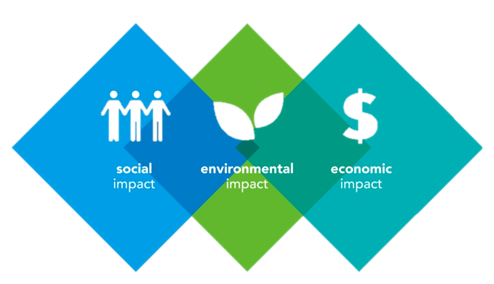Energy-based industrial symbiosis implementation enables the decoupling of economic growth from non-renewable resource exploitation, by dealing with the usage of wasted energetic resources of an industry or industrial process as a substitute to the traditionally used by another industrial process. Moreover, energy symbiosis (ES) implementation contributes to the reduction of industrial fossil fuels dependency and the achievement of decarbonisation goals of eco-industrial parks in Europe, while helping industries transition towards a more resilient, competitive and sustainable industrial model.
BARRIERS
Unfortunately, there are still barriers facing initiatives to implement energy symbiosis at regional levels. The main barriers identified are:
- lack of demand,
- connecting the public and private sectors,
- fragmented sector-alignment of actors,
- lack of a unified ecosystem of industry players: no agreed set of best practices, standard materials and processes, and regular exchange of information across the energy efficiency financing value chain,
- incomplete and fragmented support: initiatives supporting the development, processing, and analysis of project finance exist, but are splintered, inefficient and temporary,
- lack of continuous access to well-maintained, standardised materials: EU-funded projects and other initiatives are typically specialised, and once they finish, knowledge often becomes dispersed or dormant,
- lack of access to training on standardised material: even if materials are well-maintained, project developers may not have the internal knowledge or capacity to access training to learn how to apply these materials,
- Know Your Customer (KYC) – not all financiers understand the overall approach of the Energy Symbiosis project,
- trust and knowledge,
- manpower,
- ESG demands, and
- ownership transparency.
BENEFITS
Besides these barriers, Energy symbiosis has a wide range of advantages for the different stakeholders involved, ranging from decreased production costs to a public greener business perception, positively impacting both businesses and the ecosystems around them. They can be divided for socio-economic, territorial economic and environmental benefits.
Socio-Economic benefits
- Incomes from selling or exchanging industrial excess heat or organic by-products for fuel production.
- Saving costs on production costs by the reduction of external energy consumption.
- Cutting expenses linked to carbon emissions.
- Expanding market outreach and revenue derived from public perception of a more sustainable company.
- Increased and strengthened collaboration environment, more prone to further collaborations among industrial partners and public authorities.
Territorial economic benefits:
- New business creation & economic development derived from the collaborative approach.
- Maintaining jobs or new jobs created from new supply chains.
- Reduction of dependency on energy-imported resources while encouraging local resource development.
- Increase in sustainability awareness.
- Stronger regional economies
Environmental benefits
- Reduction of carbon the footprint at industrial sites.
- Reduction of GHG emissions derived from energy consumption.
- Reduction in fossil fuels extraction/usage.
- Territorial development into a greener industrial model.
[/vc_column_text]


No Comments
Comments are closed.